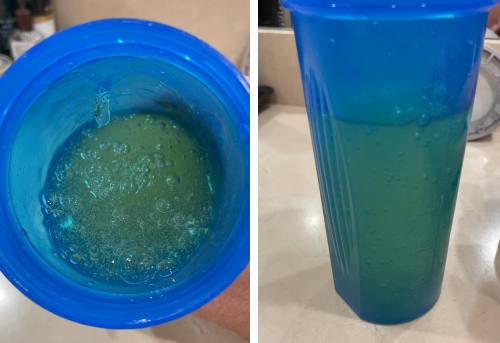Bases (Principal Ingredient)
The lubrication base refers to the primary active ingredient within the lube that gives the lube its defining characteristics. Common umbrella terms for bases include water-based lube and oil-based lube. Neither water-based nor oil-based are very helpful. Glycerine lubes (such as KY Jelly and Astroglide), polysaccharide lubes (such as Guar and Xanthan gum), and PEO lubes are all water-based lubes. Shortening (such as Crisco), plant oils (such as coconut oil and shea butter), and petrolatum (such as Vaseline) are all oil-based lubes.
Most fisters use greater specificity to refer to their lube bases. For example, they will use Alphabet Lube or PEO-based Lube to refer to water-based lubes with the active ingredient of polyethylene oxide.
QUICK REFERENCE
VOCABULARY
Lubrication Base
- Noun Phrase The primary or principal ingredient that gives a lube its lubricity or slipperiness.
Selection Criteria
Fisters select different bases for various reasons:
- Availability | Finding specialty lubes can be difficult. A common fall back are lipid-based lubes such as shortening (Crisco) and plant oils.
- Lubricity and Viscosity | The silkiness, slipperiness, thickness, and drag factors of lube "speak" to fister's holes differently. For example, some prefer lots of drag to slippery slimy messes. The selected base controls such characteristics.
- Cost | The per mL (fl oz) cost of some lubes are prohibitive. For example, most silicone lubes are too expensive to use as a general fisting lubricant. On the other hand, the alphabet lubes produce many liters (gallons) of lube for a relatively low price.
- Health Concerns | Most lube bases are not organic and there are no studies that address how lubes affect the body in the short or long term. In some cases, lubes may be avoided for blood sugar reasons.

Figure 1.1: Lubricity Considerations
Lipid-based lubes, like Crisco, often create more drag (and have less lubricity) than PEO-based lubes. Some fisters enjoy the extra drag provided by lipids.
Expiration Dates
Bases have expiration dates.
Lipids such as Crisco will go rancid with time. Rancid oils may smell odd or look discolored. Most food grade lipids have expiration dates on product packaging.
| Crisco Product | Longevity at Room temperature |
|---|---|
| Can – Sealed | 2 years from date of manufacture |
| Can – Opened | ~1 year |
| Sticks – Sealed | 2 years from date of manufacture |
| Sticks – Opened | ~6 months |
Table 1.1: Package Date Expiration for Crisco Products
Length of guaranteed freshness varies based on the product line. Storage within the fridge or freezer makes little difference to longevity.
Glycerine-based lubes (like Wet, Astroglide, KY Jelly) and emulsifying powders (PEOs and gums) degrade and lose their lubricity. Follow expiration dates on packaging when available. Alphabet lubes typically do not have expiration dates on the packaging; however, the lubricity is affected with time and lube becomes less viscous and ineffective for play. When a base no longer creates the desired lubricity with your standard recipe, it is time to discard it.

Figure 1.2: Package Date Expiration
Many products have Best if Used By dates; however, once opened, a product can degrade prior to the expiration date. Recording the opened date helps gage freshness.












